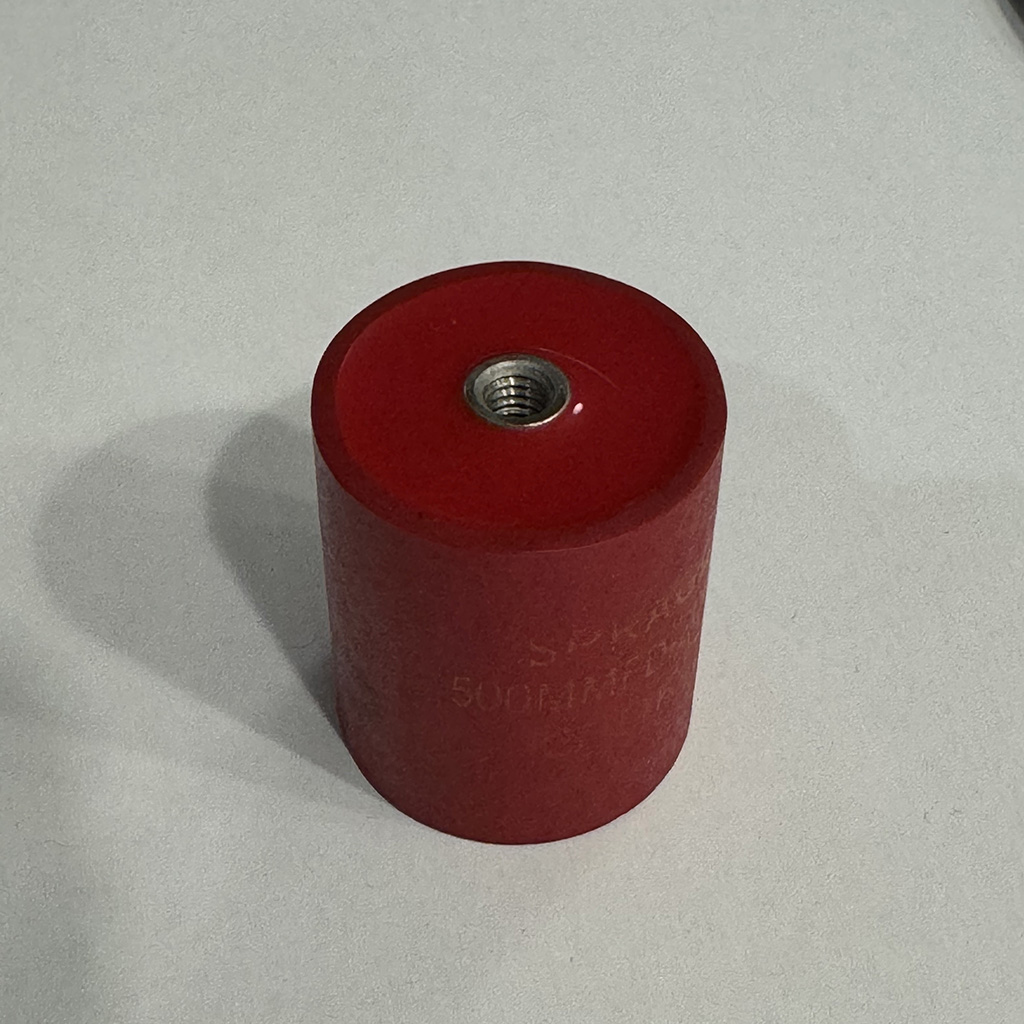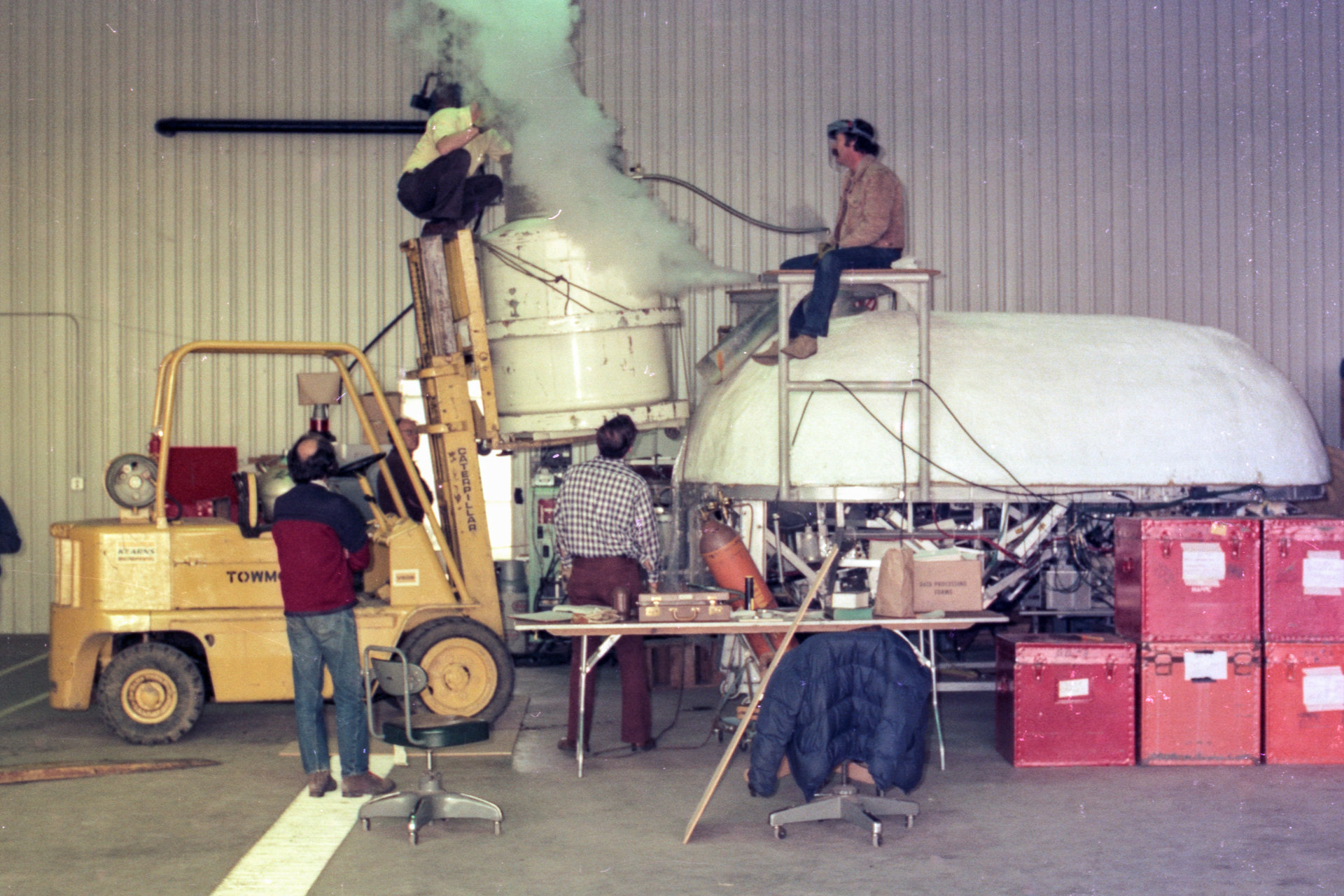Instrument Troubleshooting
Cosmic ray instruments are complex and it seems there is always something that needs adjusting or fixing or calibrating, and then testing and confirming and re-calibrating. This is what consumed our time while waiting for the wind to die down. And it is a good thing to have had that time to do those last ground tests, because we encountered a troubling condition—an intermittent false trigger.
Intermittent failures are some of the most difficult to solve. It is hard to isolate the conditions that cause them. It almost relies on luck to locate the cause with certainty, and so it becomes a matter of making speculations and testing hypotheses.
One of the components in the instrument was a spark chamber, which comprised horizontal layers of foil sheets. A high energy particle passing through the chamber would ionize the gas in it, creating a conducting path. Charged to a high enough voltage, an electrical arc would strike between the layers of metal foil along that path. A camera photographed the electrical arc from two angles, which provided a trajectory vector. While the spark chamber did not contribute directly to information about the particle’s mass or energy, it provided the path information for locating where the particle track would be found in the emulsion block when it was later analyzed. It also provided path information for processing the data from the other detectors. It was a critical component.
The intermittent failure we encountered was a spontaneous firing of the spark chamber: a spark was generated with no reason for it. This created an apparent “event” with no particle to trigger it, and none would be seen in any of the other detectors. Why would the spark chamber strike an arc when there was nothing there?
It was rare but unexplainable. And it seemed to be getting worse. Over the weeks waiting for the wind to die, the spontaneous triggers became more frequent. And the concern about it grew. Chuck became more and more distressed by this condition, because it would contaminate the cosmic ray event data that he was expecting to acquire.
I don’t know how Chuck and Bob were finally able to isolate the source of the problem, but somehow they did. A defective electronic component, a capacitor, was found in the high voltage power supply. It was a very specialized capacitor, one that could hold a high charge at high voltage but it was breaking down at random moments and discharging itself. Unfortunately, in the spare parts supplies of our field lab, we did not have a replacement.
Fortunately, in the town of Aberdeen SD, there were television repair shops. In those days (1977, remember), televisions used cathode ray tubes (“picture tubes”) which required high voltage to operate. And to service all those picture tubes in all those televisions in the homes of everyone in Aberdeen, there were TV repair shops, which had a spare parts inventory with the very capacitor that we needed! When we visited one of them to obtain our valuable replacement, I remember the owner saying “Oh yeah, those fail all the time. That’s why we have them.”
I was quite impressed at the troubleshooting that I had just witnessed and I managed to keep as a souvenir, the very capacitor that was replaced; the culprit of our intermittent failures!

Feeding the Magnet
On the many days where the wind maintained its balloon-hostile levels, we hunkered down to maintain the sensitivity and readiness of our research instruments. On either side of us in the hangar-lab were other research groups with their own instrument and experiment complexities. One was a large group from University of California, Berkeley, and on the other side was a small group from Washington University in St Louis (WUSTL).
It was hard to ignore the Berkeley group. They had an ambitious experiment that involved a superconducting magnet. It was a large and complex payload, and I recall the night they “charged the magnet”, meaning that they brought it to superconducting temperature and then introduced a current into the electromagnetic coils. Because there was no resistance in this state, they could increase that current to very high levels, resulting in very strong magnetic fields. The magnetic fields would deflect the cosmic rays in ways that would reveal their makeup. As with the details of our own experiment, I did not understand the physics of Berkeley’s detector.
But I could tell that preparing the superconducting magnet was a tricky process. The current had to be injected carefully, because too-rapid changes could induce a transition out of the superconducting state, resulting in a thermal runaway and, based on the expressions of apprehension on the faces of the Berkely team, disastrous and catastrophic results. It took the entire evening, but the magnet was finally fully charged.
And once it was running at full power, it needed to be maintained and ready for launch whenever the wind would allow. Every day a giant tank of liquid helium would be fork-lifted into position to replenish the coolant for the magnet. A transfer would be made, carefully guided by cryogenic conduits, creating a mystic vapor rising around the pipes, which dripped nitrogen and oxygen condensed from the air.
There was a strong magnetic field surrounding the Berkely instrument (a huge cylindrical cocoon around the elaborate apparatus), invisible, but penetrating. Conventional metal tools like wrenches and pliers would be yanked from your hands, so specialized tools were fabricated from non-ferrous metals like beryllium and copper. When I walked past it on my way to our section of the hangar-lab, I kept my distance.


